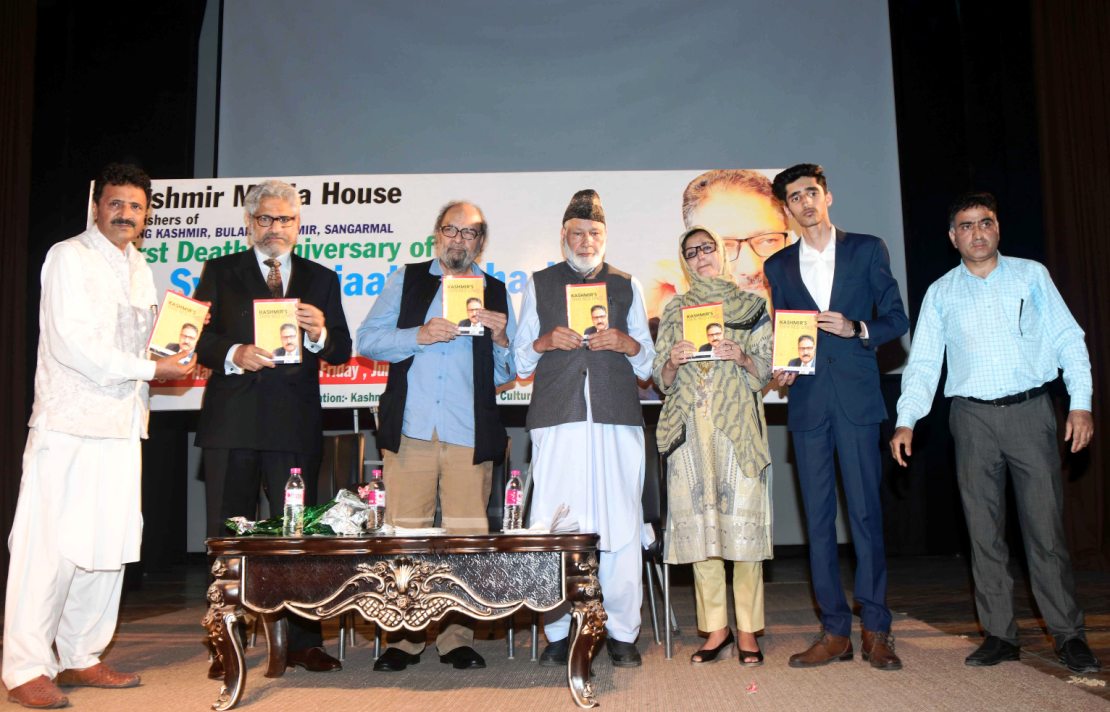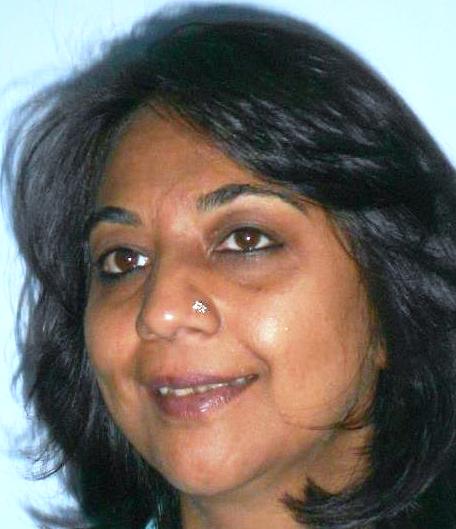by Anuradha Bhasin Jamwal
Exactly a year ago, senior journalist Shujaat Bukhari was shot dead within minutes after he came out of his office. His chilling photograph face down inside his car, his lifeless frame draped in a dark purple shirt is a moment that continues to haunt.
More than 60 bullets were fired by the three unidentified gunmen who came on a mobike unnoticed and slipped away amidst the crowd with equal ease. 16 to 40 bullets, according to different versions, were found inside Shujaat’s body. It took only one to snuff life out of him. But that very bullet also changed the face of journalism in Kashmir with the sword of intimidation and persecution constantly hanging over the heads of many of his surviving colleagues. Many still continue to bravely negotiate their way maintaining utmost professional ethics.
Shujaat was not the first journalist to be killed and it is wishful thinking he would be the last. 18 others have met their end in tragic violent incidents since 1990 and many more were shot at, tortured, jailed or persecuted in various other ways. However, in a conflict zone like Kashmir, his horrifying murder has a far greater significance than the convenience of reducing him to a footnote in the chapter on perils faced by media in Kashmir.
Shujaat’s case stands a little apart from the previous cases for many reasons. During the span of the two and half decades of his professional career, Shujaat had been involved in several peace initiatives and in the last decade had graduated to the higher level of active participation in track two processes. Much of his writings, balanced and essentially in keeping with professional ethics, advocated peace and dialogue while opposing violent resistance as well as brutal military repression to crush the violent rebellion. By virtue of his huge body of work in his capacity as both a journalist and peace activist, he fell in the category of greater vulnerability. Vilification campaign against him on the social media, on both sides of the border, after his involvement in several track II processes appears to have enhanced the threat he faced. The tall stature he had achieved in a short span of time added to the shock value of his murder.

As a professional journalist and peace activist, how does one respond to his death? There is an endless stream of thoughts, all pushing one into a sucking zone of despair. The immediate reaction was horror and shock punctuated with denial, followed by a sense of loss at the departing of an unforgettable colleague and more stinging than that the thought of his distraught wife, Tehmeena and his two lovely children, his parents and other family members, who are bravely continuing to keep Shujaat’s legacy alive by publishing his selected works and by continuing to run the institution he built, Rising Kashmir and its group of publications.
His death is much more than all of that. It killed that tiny spark of optimism that held us together amid a distressing situation of conflict. His death signifies many things that invoke both dismay and dread. There is dismay over the setback to efforts for dialogue and peace and independence of professional media. It makes one wonder, at least for a moment, whether our own efforts in a similar direction are worth anything at all. But more than that, it evoked an unknown sense of panic, dread and fear.
Last year, a visit to his ancestral home where the mourning rituals were being performed was enough to bring the acknowledgement of this chilling sense. His home was a site of collective mourning where visitors console not just his family members but also each other. Their hugs, tears and words mirrored and echoed each other’s despair and sense of panic. Amidst a situation that is getting hopeless by the day, this sense invokes the vital question: should the rest of us be cowed down or wait for our turn to die or be persecuted in other ways. As a lawyer friend had written on her Facebook wall, “Kashmir has turned into a slaughterhouse where the sacrificial lambs await their turn.”
A year on, questions pertaining to his death remain unanswered and unresolved. Who killed Shujaat Bukhari and why? Other than a police version of the incident claiming to have killed his assassins in an encounter, there is no evidence of either the execution of the murder or the security lapses. The official claims have not been able to satisfy the nagging questions of lack of intelligence inputs, the planning of the murder, the motive and the ease with which the killers attacked him in broad day-light on a busy street. Nobody saw it happen and no serious investigation has been carried out to unravel the truth, like many other cases of violence in Kashmir. Till date, it is not known who those killers were, other than the three-motorbike borne youth who shot him and other than it is known that it was very well planned. The only abstract motive that we know of is that they were enemies of peace and enemies of courageous voices.
And that brings us face to face with another chilling reality. The assassins must have drawn up a mental list of probables before they chose Shujaat’s name. How did they make the eventual choice? And, how many of us figured in the preliminary list?
Shujaat Bukhari’s assassination epitomizes the vulnerability of both the peaceniks and journalist fraternity in a conflict region like Kashmir where a vicious and endless cult of violence is consuming lives like an unstoppable giant. The complex Kashmir dispute throws up immense challenges for journalists and peaceniks across the board in innumerable ways. For the professional media, caught between the pressures and intimidations from both the government and the non-state actors, it has been a walk on the razor’s edge.

During the turbulent 1990s, killings, attacks on offices and residential premises of journalists, repeated bans by militant groups on one side and constant harassment by security agencies, incidents of detention and beating up of journalists and raiding their homes by men in uniform became common, transforming the complexion of Kashmiri media beyond recognition in a very short span of time. Apart from this, Kashmiri press has been facing the brunt of censorship, use of arm twisting methods and squeezing of financial resources, used by various vested interests to control journalists and pressurize them into toeing a certain line. Journalists are being arrested on frivolous, concocted charges and bizarre claims to keep them out of circulation.
In the last two decades after the 90s, the press in Kashmir did not face as much physical intimidation and the threat of elimination but been caught amidst other kinds of pressures including censorship by the government and non-government actors, choking of financial resources particularly government advertisements.
Shujaat’s killing changed that. It followed several others in the last three decades. The first major killing of a media person was that of Lassa Koul, station director, Doordarshan Kendra, Srinagar in 1990. News telecast from the Kendra was stopped for a few years and was resumed in the summer of 1993.
Editor of Alsafa, Mohammad Shaban Waqil was also gunned down in 1991. Another editor Ghulam Rasool, Doordarshan correspondent Saiyyadain. In 2003, editor of a local news agency NAFA editor Parvaz Sultan was killed in his office-cum-residence in Press Enclave Srinagar. In the same area, ANI photographer Mushtaq Ali was killed when a parcel bomb reached senior BBC correspondent Yusuf Jameel. Mushtaq Ali was sitting in his office and began fiddling with the packet which landed in Jameel’s office when the bomb went off. Yusuf Jameel, who had faced innumerable threats from both sides, was also injured and spent a year outside the Valley before he could return.

A year later, senior journalist Zafar Meraj, was picked up by unidentified gunmen and shot; and critically injured. He survived the attack.
In all these cases, investigations never reached a logical conclusion. The question of who killed Shujaat and why similarly remains mired in mystery? With physical threats and other forms of subtle arm-twisting of the media in Kashmir on the rise, are we back in the era of 90s where intimidations, imprisonment and threat to life was the norm? Amidst an un-ebbing cycle of violence, this is the chilling reality Kashmir is faced with.
(Author is Managing Editor of Kashmir Times. The opinion is a revised and updated version of an article that appeared in The News International in June 2018 and was republished in the Kashmir Times.)















